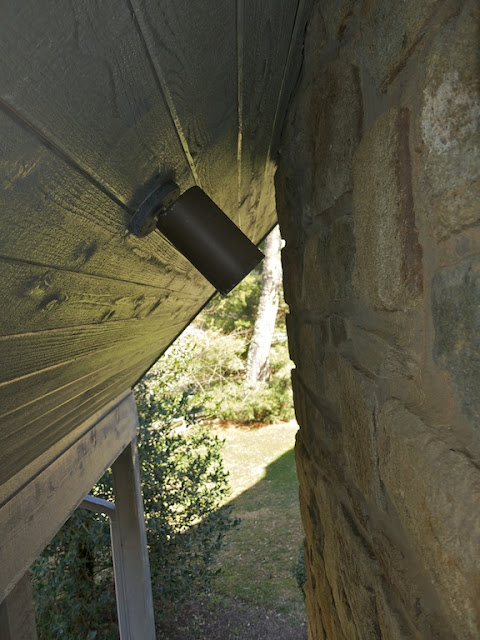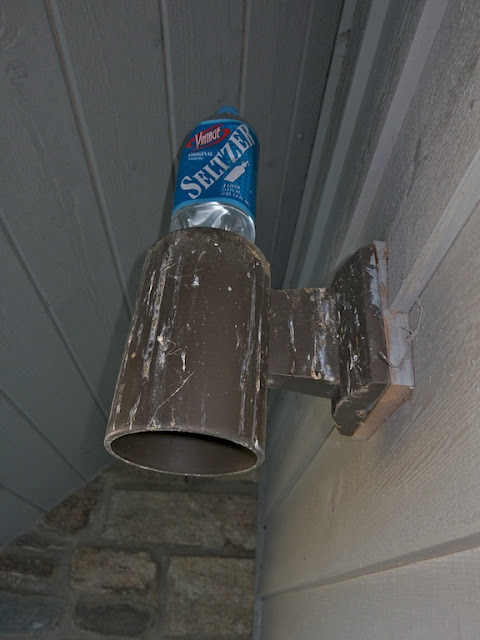
The front (from a vantage point around the middle of the front yard)

The back
The road to get there was not trivial and involved learning that we had more lights than we thought. Specifically, we didn't realize until recently that the main outdoor light fixtures had elements pointing in the upward direction. Makes sense given how tall the light fixtures are, but we just didn't know. Also, we didn't know that there was a light facing downward on the chimney. All news to us.
Now for some LED fun. If we lit all of the lights in the front of the house with incandescent bulbs, we'd be burning close to a full kilowatt - or 910 watts. This assumes that each of the fixtures would have a 65 watt bulb, which is reasonable for the PAR 38s. So if we were to leave the lights on an average of 10 hours a night, it would cost us $365.37 per year to light up the front of the house at a rate of $0.11/kWh (roughly our current rate). With the LEDs (and one CFL, cause the LED wouldn't fit in that space), we are burning only 243.5 watts. As a result, we will be saving $267.60 per year on electricity costs. However, the bulbs do cost more.
A cheap set of 65 watt PAR 38 lightbulbs costs $2 each. So for our 14 lightbulbs, lets assume a baseline price of $28, which would probably have to be replace every other year. I recently bought the PAR 38 LEDs at Costco for $36.99 (12 in use) and a PAR 30 for $29.99 (one in use) and the CFL (one in use - about $7). The total cost for the LED arrangement is a lot. Without going into too much more detail in words, see below:

The one aspect that the above chart ignores is the cost of changing lightbulbs. Though my labor in actual terms is free, I'd like to believe that my time has some non-zero value. The LEDs should last somewhere in the range of 7 years, while its unlikely that the incandescent bulbs will last more than two. In fact, the LED's should never burn out totally - their end of life is defined by only outputting 50% of their original brightness due to a degradation of the phosphorus, which happens due to the heat). That said, I don't know how these bulbs will perform outdoors. There will very cold days, where its not likely that the bulbs will heat appreciably at all and other summer nights where they will be hot. All that said, not having to think about these bulbs for the next seven years is probably worth another couple hundred dollars (even if only $30 per year -- that's still $210). I know that this is one of the drivers of adoption of LEDs for businesses - and I think it definitely factors into my thinking, too.
Finally, here are some pictures about the process for getting everything set up:

This is the "new" light

Its actually a long ways up there; this is the view from the bottom

And from the side

I was also replacing a bulb here - note the bottle of water placed on the top to help disuade any birds from building nests there, which is what happened last year. The birds crapped all over the porch and generally made a mess of things. Not terribly awesome - we were hoping to avoid it for the future - and are looking for a more permanent solution.
Ultimately, the front and rear house lights are going to be controlled by my Mi Casa Verde system that I purchased a while back, but have no hardware running on. As soon as I figure out just what types of switches I have (2-way versus 3-way, etc.) and which ones will work from a systems integration perspective.



